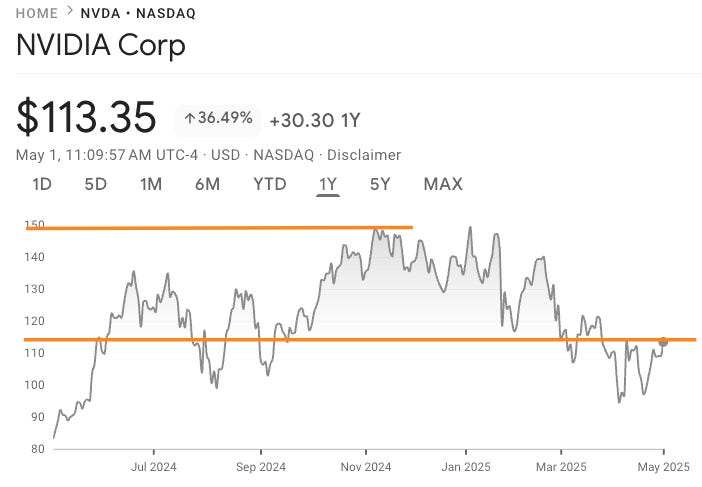
I wrote a piece last year, a tour through 200 years of “this time it’s different” tech manias—from canals in the 1800s, to the railway boom and bust, Edison’s AC/DC fight, the scramble of early automakers, and the dot-com explosion—all the way to AI.
It was well-received. Care to give it a read and share your thoughts?
The coolest part about this one is seeing those century-old charts of railway shares soaring and then plummeting, and realizing we’re playing out the exact same script with AI startups and stock prices today. Nvidia’s share has been down nearly 25% since the highest point in November 2024.
Yes, it was Trump, but there was always something, wasn’t it?
What Winston Churchill (paraphrase of Santayana) said
Those who ignore history are doomed to repeat it.
It isn’t entirely true.
He implies that those who know history could avoid repeating it…, but I believe otherwise.
I believe those who know history could decide whether to stay out of the game. Unfortunately, since human nature hasn't changed, the collective behavior would remain the same.
Today, I’m telling a different story.
Instead of tracing every past boom, I’m going to focus on the parallels between the oil tycoons of a century ago and today’s emerging AI barons. These include, but aren’t limited to: cash pouring in, resource grabbing, policy lobbying, rights trampling, and wars erupting between competitors and enemies on every front.
Same playbook, different playground.
Part I: Echoes Across Eras - Black Gold, Digital Gold
Have you ever stood somewhere and felt the ghost of the past brush against you?
Maybe it’s walking through an old industrial district, the faint smell of coal dust still clinging to the brickwork… or perhaps it’s scrolling through your newsfeed, watching the relentless march of technology reshape the world in real-time. I get that feeling strongly when I think about the titans of industry, the figures who didn’t just build companies, but forged entire eras.
And lately, I can’t shake the comparison between one of the most formidable figures of the Gilded Age, John D. Rockefeller, and the brilliant salesmen of our current technological revolution—the CEOs of AI companies.
Now let's start from the beginning…
Listen to this episode with a 7-day free trial
Subscribe to 2nd Order Thinkers to listen to this post and get 7 days of free access to the full post archives.












